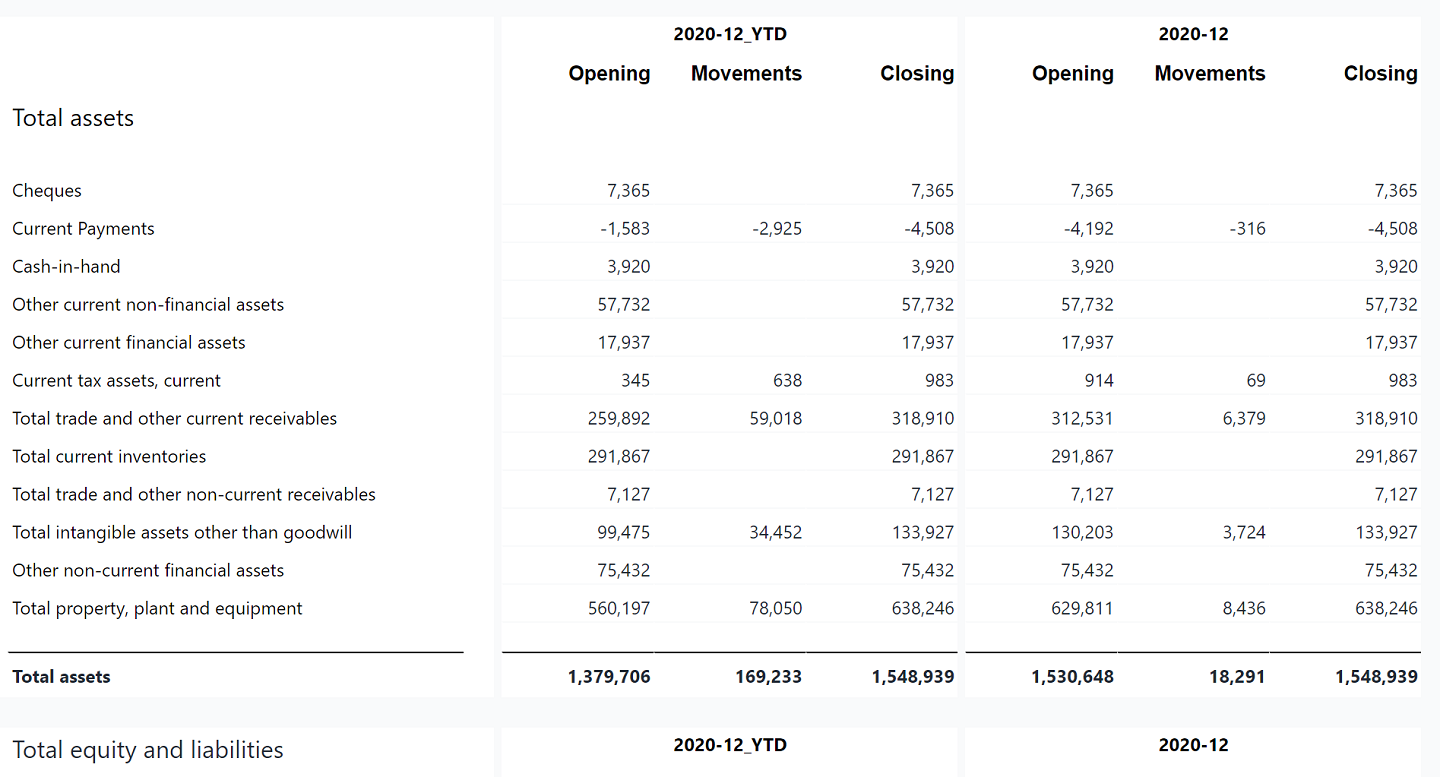Return to Financial Consolidation Model Overview.
A trial balance is a financial report that lists the balances of all the accounts in a company's general ledger as of a specific date. It is used to ensure that the total of all debit balances in the general ledger equals the total of all credit balances. If the trial balance is in balance, it is an indication that the entries in the general ledger are correct and complete.
The trial balance is usually prepared at the end of an accounting period, such as a month or a year, and it is used as a starting point for preparing the company's financial statements. It consists of two columns, one for debit balances and one for credit balances. Each account in the general ledger is listed on the trial balance, along with its corresponding debit or credit balance.
The Trial Balance is an important tool for identifying errors or discrepancies in a company's financial records. If the trial balance is not in balance, it indicates that there may be errors in the general ledger that need to be corrected before the financial statements can be prepared.
Report Heading
The report heading updates dynamically as various reporting options are selected. Below it shows the Scope, Entity and Currency dimensions for the Trial Balance report (Actual 2020_12_YTD, Bikers Best Nippon. and Local Currency (JPY), respectively):
The logo can be changed in Administration; see Configuring Design Elements for more on report design.
You can select your base elements in the Comboboxes below the report heading:
The Version dimension separates actual figures from planning figures, see full article. The Month_YTD dimension accumulates float values from the beginning of the calendar year to the current date, while respectively holding the final figure for stock values, see full article. The Legal Entity dimension represent the companies within a group hierarchy, see full article.
The check-boxes below allow you to customize the appearance of your report:
- Click
Suppress Zero Linesif you wish to hide the fields in your report with no data (if you select this option all, all available transaction types will appear: those without data will have a dash in place of numeric input). - Click
Show Account No.if you wish to display the account number prior to the account name (e.g.Other non-current financial assets→110440 - Other non-current financial assets). - Click
Show Two Decimal Placesif you wish to show the figures in double-decimal form (e.g.1,174,142→1,174,141.68).
Table Columns
The Trial balance report displays base elements from BS Account Dimension and PnL Dimension. For each table the columns show balances of all the accounts in a company's general ledger as of a chosen Month_YTD and Month in the Combobox.
The table breaks down into three parts. Above we see the Total assets section, which shows the assets accounts. There is also a section for Total equity and liabilities. Finally, the KPIs section shows different types of calculated statistical indicators.
| Field | Description | Implementation |
| Row labels | Account shown as localized name. |
The row shows data from both the |
Data selected in the header (e.g. 2020-12_YTD above). |
Selection from the Comboboxes in the header (Version, Month_YTD, Legal Entity) | The selection isbase elements in the Balance Sheet cube and PnL Cube. In addition to the Version, Month_YTD, and Legal Entity dimension, the data will reflect the local currency (LC) for the chosen legal entity. |
|
The YTD Version and specific month of the data selected in the header (e.g., 2020-12_YTD) |
The YTD Version and and specific month of the data selected from the Comboboxes in the header. | The YTD Version attribute of the selected element in the Month_YTD dimension and the Month attribute of the selected element in the Month_YTD dimension. (e.g., if Month_YTD is chosen as 2020-12_YTD, then the month chosen is 2020-12). All other data is the same as above. |
Updated August 13, 2025



